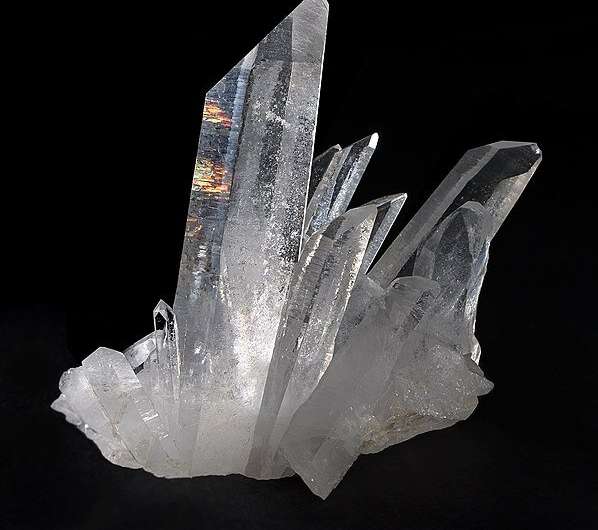This article has been reviewed according to Science X's editorial process and policies. Editors have highlighted the following attributes while ensuring the content's credibility:
fact-checked
peer-reviewed publication
trusted source
proofread
Theoretical model explains how low thermal conductivity arises in crystals

Crystals that can freely conduct electrons, but not heat, hold great potential for numerous applications. A team of researchers has now developed a method for discovering and developing these materials. Their results are published in the Proceedings of the National Academy of Sciences (PNAS).
Unlike glasses, which have very low thermal conductivity, crystals tend to be good conductors of both heat and electrons. There are, however, some that have low thermal conductivity, and the researchers set out to understand the properties of these materials and how they can be developed.
"You want the material to be thermally very insulating, while at the same time you want to have the crystal so that the electrons can zip through and generate currents," said co-author Vidvuds Ozolins, the Tom Steyer and Kat Taylor Professor of Clean Energy Solutions.
Although this "kind of goes against the nature of the crystal," Ozolins noted that such materials are useful for such applications as energy generation and thermal barrier coatings for jet engines.
"This study is about trying to understand what you need for the crystal to have a very low thermal conductivity that actually approaches the limits of glass," he said.
Generally, Ozolins noted that these properties are decided by how the atoms interact with each other when in their collective mode as phonons.
"So what we've done is develop a theoretical model for explaining how low thermal conductivity arises in crystals," Ozolins said, adding that this theoretical model also incorporates principles that apply to glasses. They used this model in combination with neural network-aided data analysis for the study.
"It basically tells you which materials you could take and then manipulate—do some experimental magic with them. And with that, you could essentially get a crystal with a very low thermal connectivity."
The next step with this work, he said, is to perform more detailed calculations to better understand the properties, as well as work with experimentalists to conduct more studies on some of the materials that the researchers predicted.
More information: Yi Xia et al, A unified understanding of minimum lattice thermal conductivity, Proceedings of the National Academy of Sciences (2023). DOI: 10.1073/pnas.2302541120
Journal information: Proceedings of the National Academy of Sciences
Provided by Yale University





















